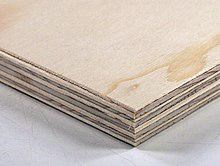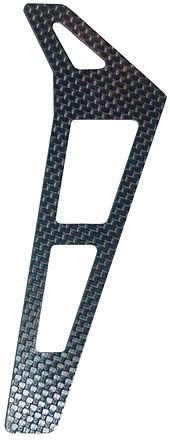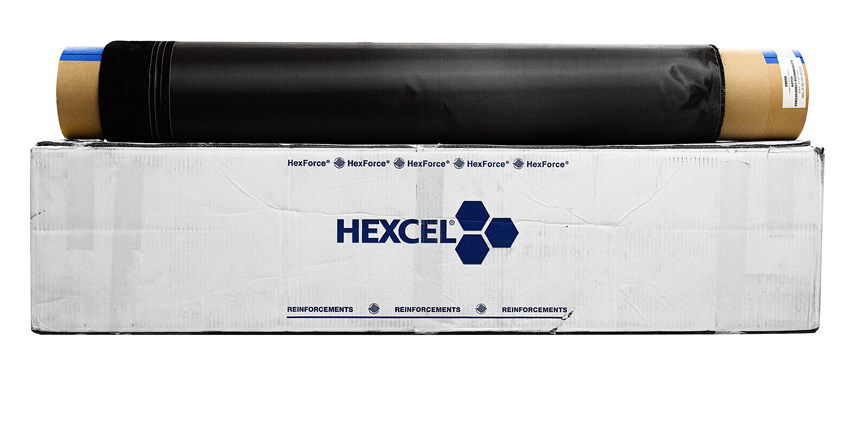Introduction
Weight is the main concern when it comes to aircraft design, especially heavier than air aircrafts. The main objective of designers is to maximize the lift to weight ratio. To achieve this objective, the aerodynamic design is continuously enhanced to increase lift, and material research is always active to reduce weight. When talking about weight reduction, composite materials is the first thing that would be mentioned, as it had a great effect on the weight reduction of modern jets. The development of composites in aircraft structure started in 1987 and since then, it never stopped. There is a study stating that the percentage of composite materials in aircraft structure is being doubled every five years [1].
Background and Uses
Composites are materials that are manufactured from two or more element materials. The materials used in the combination usually have different and opposite properties, and the reason for that is to combine these properties to form a material that has unique properties. The difference between composites and other combinations (such as alloys or mixtures) is that the two elements in the combination remains distinct even though the surface is finished [2]. The following elemental materials are widely used in the composites:

- Plywood
- Reinforced concrete
- Ceramic [3]
- Reinforced plastics
- Metals [3]
Composite materials are used in Aerospace industry with high versatility. It is used in the load-carrying structural members of the bodies and components of various types of flying vehicles, including civil aircrafts, military fighter jets, spaceships, gliding aircrafts and even in hot balloons. The composite materials are present in wing and fuselage structures for fixed-wing aircrafts, rotor blades for helicopters, propellers of engines, and even in internal cabin materials such as seats and equipment casings.
In an experimental procedure, Boeing was able to replace 11 thousand metallic components with 1500 composite ones in a helicopter. This proves that the use of composites is pushing the aerospace industry towards a more weight reduced designs, and hence more fuel efficiency.
Types of Aerospace Composite Materials
There are three main types of composite materials that are used in aerospace industry:
1.Carbon Fiber
2.Glass Fiber & Aramid
3.Reinforced Epoxy& Kevlar

Each one of these types has unique mechanical and thermal properties, and hence each type is utilized in specific area of the aircraft structure.
Carbon fibers is famous for its unique fatigue trend and being very brittle, so they are used in engine fan and compressor blades, wing, and fuselage structural components. An example is the Hexcel G0904 Composites Carbon Fibre Composite Dividers.
Boron can withstand high aerodynamic loads, so it is preferable in the fighter jets’ wing structure.
Kevlar is well known for its very light weight and high stiffness, so it is used in floor panels, fuel tanks and control surfaces of aircraft. The most widely used type in the aerospace industry is the carbon fiber reinforced polymer (CFRP)
Advantage of Composite Materials in Aircraft:
Composite materials utilization in aerospace industry had a very positive effect on the economical side of the industry due to its numerous advantages. The following points resembles some of these advantages:
- Weight decrease: reduction ranging from 20% to 50% are frequently cited.
- Rotational molding techniques and automated lay-up equipment make it simple to put together complicated components.
- Molded monocoque (or "single-shell") constructions offer greater strength at a significantly lower weight.
- By using a 'lay-up' design with tapering thicknesses of reinforcing fabric and changing the orientation of the fabric, mechanical characteristics may be customized.
- Thermally Stable: The term "thermal stability" refers to a material's capacity to resist severe thermal expansion or contraction (for instance, going from a runway at 90°F to -67°F at 35,000 feet in a matter of minutes) [1].
- Kevlar or Aramid armor with high impact strength protects planes as well, preventing, for instance, inadvertent damage to engine pylons that house fuel and engine control cables.
- The capacity to withstand harm after an accident is improved [1].
- Galvanic corrosion issues that may arise from the interaction of two different metals are prevented, especially in humid maritime conditions. (Non-conductive fiberglass is used in this application).
- Problems with corrosion and fatigue in combination are essentially gone [2].
Disadvantage of Composite Materials in Aircraft:
Composite materials have numerous advantages as seen above, however, they also have some drawbacks when used in the aerospace industry. These drawbacks are listed as follows:
- Composite materials are more brittle and more prone to breakage as compared to wrought materials.
- Some problems with their repair exist. For example, materials require refrigeration for both storage and shipment. Like cold curing, heat curing frequently calls for specialized equipment.
- Due to how quickly the aluminum bends and dents, it is simple to tell whether the aircraft needs repair. Nevertheless, it is difficult to see when composites are employed to create the inner structure.
- Since composites employ resins that become unstable around 66 degrees Celsius, it is crucial to adopt fire safety precautions. Burning sophisticated composites exposes people to considerable health concerns as poisonous microparticles and gases are released into the atmosphere. At 149 degrees Celsius, structural collapse is also conceivable.
Future Trends :
Commercial aviation is under constant pressure to increase performance due to rising fuel prices and environmental activism, and weight reduction is a crucial component of the equation.
By reducing the number of components and corrosion, the aircraft maintenance programs may be made simpler in addition to the daily running expenses. Because of the fierce competition in the industry, any possibility to cut operational expenses is investigated and taken advantage of.
There is competition in the military as well, with constant push to improve payload and range, flight performance characteristics, and 'survivability' of both airplanes and missiles.
The use of composites will undoubtedly increase as new varieties like basalt and carbon nanotube forms become available. Composite technology is still evolving.
Conclusion :
Due to their lightweight, robust, and long-lasting qualities, composite materials are an essential component in aeronautical engineering. Along with matrix materials like phenolic, polyester, and epoxy, the aerospace sector frequently uses glass fiber, Kevlar, and carbon fiber. Due to their durability and small weight, composite materials have been employed in suborbital aeronautical vehicles. To achieve success, engineers must select the appropriate material for each application because these materials have restrictions.





Comments
There are currently no comments, be the first to comment.